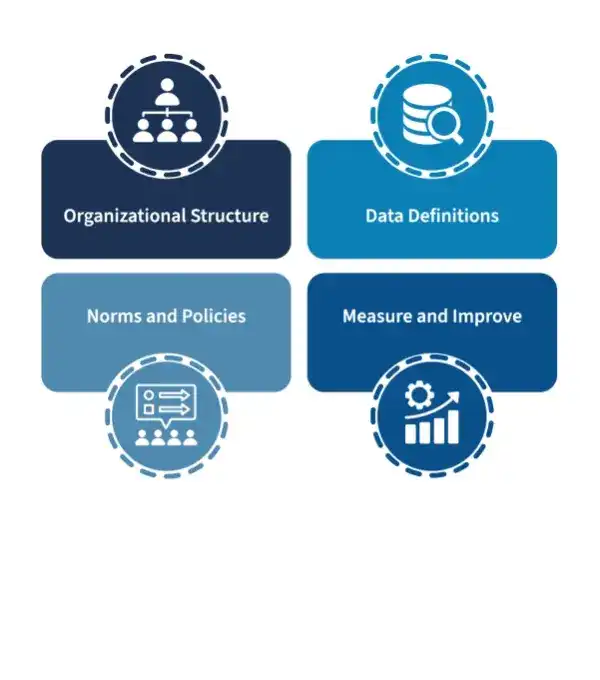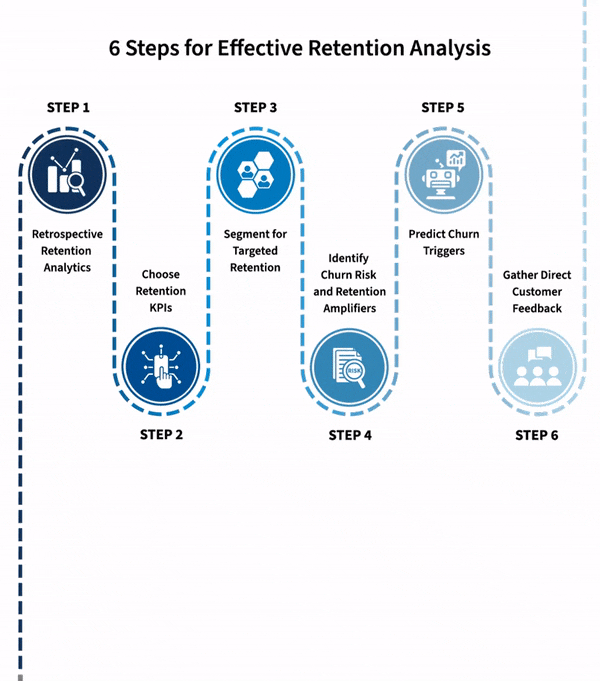
 Maximilian Filtenborg
Maximilian Filtenborg

B2B customers do their own research on software before talking to sellers. Companies are adjusting to this by letting users freely try their products to boost growth. This is called Product-Led Growth.
A recent report by Considered Content reveals an interesting trend on today’s B2B landscape: 66% of B2B buyers conduct their own research before reaching out to vendors, with more than half (53%) preferring to make purchases without interacting with sales teams at all. Moreover, when these buyers do engage with sales, 63% of them expect a higher level of insight and guidance. In essence, businesses must excel at providing buyers with the resources they need throughout their purchasing journey.
To put it simply, consider this scenario: a company faces a choice between multiple tools. One of these tools can be used for free, without any restrictions. Why would they bother contacting other vendors when they can explore this option first?
This shift in buyer behavior is driving the increasing adoption of ‘Product Led Growth’ (PLG) practices among B2B SaaS companies. But what exactly is PLG, who stands to benefits from it, and what role does data play in this transformative approach?
Product-led growth (PLG) sets itself apart from the more known Sales-Led Growth (SLG) approach. In SLG, marketing generates leads, which are then passed on to sales teams for deal closure.
PLG, however, is a different strategy. Here, the product itself fuels business growth. While the marketing team still generates leads, these leads can instantly use the software without going through extensive onboarding or encountering paywalls.
In PLG, you don’t merely show or tell leads about your tool; you provide immediate access, often through a free trial. Success centers on user experience and perceived value. Users who recognize the solution’s true worth may never need to engage with sales. Some are so impressed that they make self-service purchases without any sales interaction. The ultimate aim is organic customer base growth, where satisfied users naturally bring in colleagues and peers.
In essence, Product Led Growth emphasizes demonstrating the value of your software rather than just talking about it. The goal is to streamline the deal-closing process for efficiency and speed.

This ‘show, don’t tell’ approach may not suit all types of software. Product-Led Growth (PLG) is particularly well-suited for companies serving recurring needs, where users quickly grasp the value. Additionally, PLG thrives when word-of-mouth recommendations can play a significant role (although extremely novel categories may not be ideal because users need help to explain the benefits). A substantial user base and a reasonable price point further enhance the potential for successful PLG adoption.
The earlier a company is in its growth journey, the smoother the integration of PLG tends to be. Enterprises requiring extensive customization may face challenges in implementing PLG effectively. For them, experimenting with PLG for new products can help gather user feedback and protect their competitive position, especially when competition from next-generation B2B startups looms.
Other compelling use cases for embracing PLG include:
How do you showcase the value of your solution without the need for guidance? Here’s how:
Now that we understand the basics of PLG and how it works in real life, let’s look at some examples to see it in action.
Product-Led Growth (PLG) has become a well-known strategy in the world of SaaS companies, and many have achieved great success with it. Let’s look into three examples:
Calendly
Calendly enjoyed the advantage of having a product with an incredibly easy-to-explain value proposition, delivering instant benefits to users and featuring an inherent viral growth mechanism.
Even though the company provided a substantial free plan, each calendar invite sent by a free user included a call-to-action. As more free users shared calendar invites via Calendly, the acquisition of new users increased.
Slack
Slack’s biggest advantage is that they understand how valuable their service is to customers and how to show that value quickly to people who use it on their own. They also know when a user is a good fit for their service by looking at how they use it. Early on, Slack paid attention to whether a new user was using their service actively, such as having more than three users and sending over 50 messages.
When new users reached this level of activity, they were much more likely to become paying customers.
This understanding guided how Slack sold its product, and it played a big role in its success.
Learn more about Slack’s growth utilising PLG..
Notion
Notion grew to a SaaS unicorn within two years by employing a mix of product-led growth, while also investing heavily in community, which added another channel for viral growth to their mix.
Notion’s path to success was marked by a sharp focus on impactful metrics. They made significant strides by optimizing the signup conversion rate through straightforward experiments. Right from the beginning, their commitment to data-driven decision-making set them apart. Notion also invested considerable effort in crafting precise user segments, enhancing their understanding of their audience, and tailoring their approach to perfection.
Explore more about Notion’s journey and their succes with PLG.
As you can see, some well-known companies have found success with PLG. Let’s explore the impact of using PLG in your business.
Integrating Product-Led Growth (PLG) practices offers several notable benefits:
1. Increased acquisition: PLG places strong emphasis on user-friendly sign-up processes, often complemented by free trials or freemium models. This results in a substantial boost in user acquisition.
2. Lower acquisition costs: Compared to traditional sales and marketing methods, PLG typically requires fewer resources and thus reduces acquisition costs.
3. Higher net revenue retention (NRR): NRR measures the percentage of revenue retained from existing customers over a specific period, accounting for upgrades, downgrades, cross-sells, and cancellations. Companies employing PLG strategies tend to achieve significantly better NRR compared to other SaaS businesses.
4. Faster CAC payback period: In a PLG model, revenue growth primarily comes from expanding existing accounts, leading to a considerably shorter payback period for that revenue.
These advantages, however, don’t appear out of thin air. The most potent driver for closing a sale is when customers have firsthand experience with the tool and find it superior to other options. Consequently, focusing on user engagement and product usage becomes crucial.
To attain these benefits, certain foundational elements must be established:
As previously highlighted, PLG depends on data, making a robust data infrastructure essential for success. This infrastructure should encompass the following components:
1. Product analytics tools and data instrumentation:
Effective analytics on product usage is crucial for succes with PLG. Tools such as Amplitude can be incredibly useful in this regard. Since B2B companies frequently rely on custom-made software, they often lack ready-to-use off-the-shelf analytics tools. Therefore is focusing on this aspect crucial for them.
2. Marketing data warehouse:
A comprehensive data warehouse that consolidates customer data from various sources, including product usage, marketing campaigns, sales activities, and third-party firmographic data, is imperative. This setup allows businesses to answer detailed questions about user behavior and interactions, facilitating targeted efforts such as personalized email campaigns based on feature usage.

3. Experimentation platform (A/B Testing Tooling):
Regular A/B testing is essential to determine what keeps users engaged. While you could develop your own platform, it requires substantial resources in terms of engineering and data science expertise. Alternatively, you can explore existing tools like VWO or Optimizely to streamline your A/B testing processes.
4. Lifecycle marketing tools:
These tools provide insights into customer interactions across various stages of their journey. By tracking buying patterns, purchase history, post-purchase experiences, and overall engagement across multiple channels, these tools enable you to create detailed customer profiles and trigger tailored messages to the right users at the right time.
It’s not just about the data infrastructure; Key Performance Indicators (KPIs) also play a crucial role in achieving PLG success. However, with numerous KPIs available, which one should be focused on the most?
KPI’s play a pivotal role in achieving success with PLG, and their measurement should prioritize outcomes over outputs. Shifting the team’s focus towards reducing churn rates instead of simply shipping new features is crucial. This approach encourages teams to concentrate on achieving the desired outcomes and, if necessary, delve into research and refinement rather than solely focusing on product delivery.
What specific outcomes should you measure? In the realm of PLG, success or failure hinges on the creation of a seamless process for customer acquisition, adoption, referrals, and revenue generation. Let’s explore some essential metrics that PLG companies should prioritize:
To successfully implement PLG, it’s essential to assemble the right team. In the initial stages, you have two options: either create a dedicated growth team or establish a cross-functional growth team that includes members from product, marketing, customer success, and data, depending on the specific PLG initiatives you’re pursuing. Regardless of the approach, a multidisciplinary team is important. For instance, if data reveals that a particular feature is heavily utilized, it provides valuable insights for the marketing team on where to focus their efforts.
However, exercise caution when considering the inclusion of salespeople in the team. They may inadvertently revert to a sales-led model, which contradicts the “adopt-before-buy” principle of PLG. If human involvement is required before adoption and monetization, consider using a customer success profile trained to understand buyers' needs and guide them on fulfilling those needs within the product.
Additionally, ensure that the team reports to the product department, not marketing. This setup facilitates immediate processing of test results, a capability that software developers possess but not marketers.
Committing to PLG brings about significant changes to your business, and, like any transformation, it comes with its set of challenges. Here’s an overview of some common challenges and their solutions:
1. Lack of commitment and investment: PLG should align with your business goals, requiring a commitment to invest in the roadmap, team, infrastructure, and time. This commitment should start from the top and be fostered throughout the organization.
2. The product is not ready: To implement PLG effectively, you need a product that can offer features like a free trial or freemium version. Don’t hesitate to offer control to users; it can lead to the acquisition of new user segments. Utilize analytics to learn how to monetize them effectively.
3. Lack of data infrastructure and PLG expertise: To succeed with PLG, you must be able to track the behavior of free users, identify their most-used features, and understand usage patterns that correlate with higher free-to-paid conversion rates. If you can’t do this, prioritize building a robust data foundation. This foundation supports your PLG efforts and enables a data-driven approach in product development and customer success.
4. Resistance from current teams: Resistance is natural when implementing significant changes. It’s crucial to secure executive buy-in and commitment. Help teams see the value and benefits that PLG can bring to them, emphasizing the positive impact on their roles and the organization.
By addressing these challenges, you can pave the way for a successful PLG strategy.
As statistics reveal, buyers are increasingly self-serving, seeking immediate access to solutions that align with their needs. The essence of PLG lies in a paradigm shift—showing the value of your product rather than just telling about it. This transformation streamlines the buying process, making it efficient and user-centric.
However, PLG is not a one-size-fits-all strategy. It thrives in environments where recurring needs can be swiftly met, word of mouth can flourish, and there is a sizeable user base. Early integration of PLG is more straightforward, but even established enterprises can experiment with it for new products to gather invaluable user feedback.
Data is the backbone of PLG, enabling informed decisions and personalization. A robust data infrastructure is crucial, encompassing product analytics, marketing data warehousing, experimentation platforms, and lifecycle marketing tools.
Building the right team is equally essential. A multidisciplinary approach is key, but caution must be exercised when involving sales personnel, as they might revert to a sales-led model.
Challenges abound in the PLG journey, from lack of commitment and investment to resistance from current teams. Yet, with top-down commitment, strategic investment, and a data-driven approach, these challenges can be overcome.
In a world where users want quick benefits and doing things on their own, PLG isn’t just a choice; it’s almost a must-have. It helps businesses showcase their products, making it easier and more satisfying for potential customers to become loyal ones. As the digital age changes how businesses interact, PLG is like a guiding light for customer-focused innovation, using data and ready for growth.

Jeroen gets his energy from dealing with people and problems. Given a background in venture capital and founder experience in an AI startup, he knows how to tackle (digital) business problems. In his free time he likes to run marathons and play golf.
Read moreEnjoyed reading this post? Check out our other articles.

 Maximilian Filtenborg
Maximilian Filtenborg

 Maximilian Filtenborg
Maximilian Filtenborg

 Maximilian Filtenborg
Maximilian Filtenborg